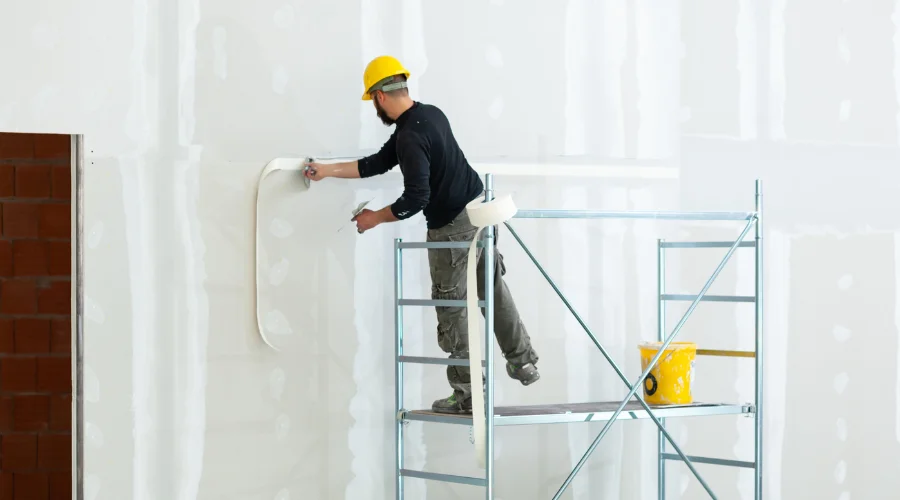Stucco has been a preferred external treatment among homeowners for ages due to its versatility and durability. Because of its distinct texture and resistance to different weather conditions, it is a popular choice for improving a home's aesthetic appeal. To ensure its lifetime and maintain the best-looking exterior for your home, stucco needs to be properly maintained, just like any other exterior material.
In this in-depth tutorial, we'll cover what stucco is, why maintenance is essential, common stucco issues, and when to do maintenance activities yourself or hire pros. For more information on https://daytonstucco.com/, discover the perfect blend of aesthetics and resilience by contacting us or visiting our website.
What is Stucco?
Stucco is a cement-based plaster commonly used as an exterior finish for homes and buildings. It consists of cement, sand, and lime mixed with water to create a textured, durable coating. Applied over a wire mesh framework, stucco provides an attractive and weather-resistant finish that can withstand various climates.
Why Stucco Maintenance Matters
- Preserving Aesthetics: Stucco's appeal lies in its distinctive texture and color. Regular maintenance helps retain these characteristics, ensuring your home maintains its curb appeal.
- Preventing Structural Damage: Stucco can develop cracks and other issues that compromise its integrity over time. Timely maintenance prevents minor problems from escalating into significant structural issues.
- Weather Resistance: Stucco acts as a protective layer against the elements. Proper maintenance ensures that it continues to provide a reliable barrier against rain, wind, and other environmental factors.
Common Stucco Problems
Cracking
- Hairline Cracks: These are thin, superficial cracks that often result from the natural settling of a home. They are generally harmless but should be monitored.
- Larger Cracks: Cracks wider than 1/8 inch can be more concerning and may indicate structural movement or issues with the stucco application.
Causes
- Settling: Homes naturally settle over time, leading to minor cracks.
- Temperature Fluctuations: Extreme temperature changes can cause stucco to expand and contract, leading to cracks.
- Poor Installation: Improper application during installation can result in structural weaknesses.
Maintenance Approach
- Hairline cracks can often be addressed with regular inspections and minor patching.
- Larger cracks may require professional assessment and repair to prevent further structural damage.
Staining
Causes
- Mold and Mildew: Moisture and humidity may cause mold and mildew to develop on surfaces made of stucco.
- Airborne Pollutants: Environmental pollutants, such as dirt, dust, and pollutants, can cause staining over time.
Maintenance Approach
- Regular cleaning using a mild detergent or a mixture of water and vinegar can help prevent and remove stains.
- Addressing the root cause, such as improving drainage, can prevent future staining.
Efflorescence
Description
- Efflorescence appears as a white, powdery deposit on the surface of stucco.
Causes
- Water Migration: Moisture from within the stucco can bring salts to the surface, leaving behind efflorescence.
- Water Infiltration: Water entering the stucco system can dissolve and carry minerals to the surface.
Maintenance Approach
- Brushing or washing the affected areas with a mild acidic solution can remove efflorescence.
- Identifying and addressing water sources, such as leaks or inadequate drainage, is crucial to prevent recurrence.
Cracking Around Windows and Doors
Causes
- Structural Movement: Settlement or movement in the home can cause stucco to crack around windows and doors.
- Inadequate Expansion Joints: Without proper expansion joints, stucco may crack as the structure expands and contracts.
Maintenance Approach
- Sealing cracks promptly with appropriate sealants can prevent water infiltration and further damage.
- Ensuring the installation of expansion joints during repairs or renovations can mitigate future cracking.
Color Fading
Causes
- Sun Exposure: Extended sun exposure may lead to fading and discoloration.
- Low-Quality Pigments: Inferior pigment quality may result in premature color changes.
Maintenance Approach
- Regularly cleaning and applying a fresh paint or stucco color coat can refresh the appearance.
- Choosing high-quality pigments during repairs or repaints can ensure longer-lasting color vibrancy.
When to DIY and When to Call Professionals
DIY Tasks
- Cleaning: Regularly clean your stucco with a soft brush or low-pressure water to remove dirt and prevent staining.
- Minor Cracks: Small cracks can be patched with a stucco patching compound, but monitoring for any signs of worsening is essential.
Professional Assistance
- Large Cracks: If you notice significant cracks or structural issues, it's best to consult a professional to assess and repair the damage.
- Water Damage: Address water damage promptly to prevent mold growth and further deterioration. Professionals can identify and fix the source of water infiltration.
Maintaining your stucco isn't just about aesthetics; it's crucial to protecting your home from the elements. Regular inspections, cleaning, and addressing minor issues can go a long way in preserving the integrity and beauty of your stucco exterior. Remember, when in doubt or facing significant problems, don't hesitate to seek professional help. By following this comprehensive stucco maintenance guide, you'll enhance your home's curb appeal and ensure its longevity and structural soundness.
